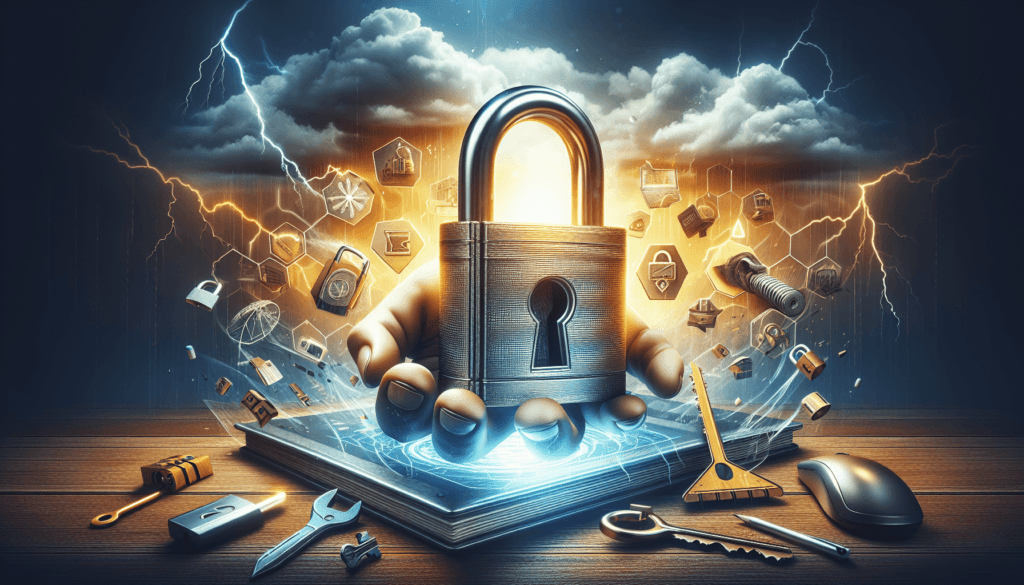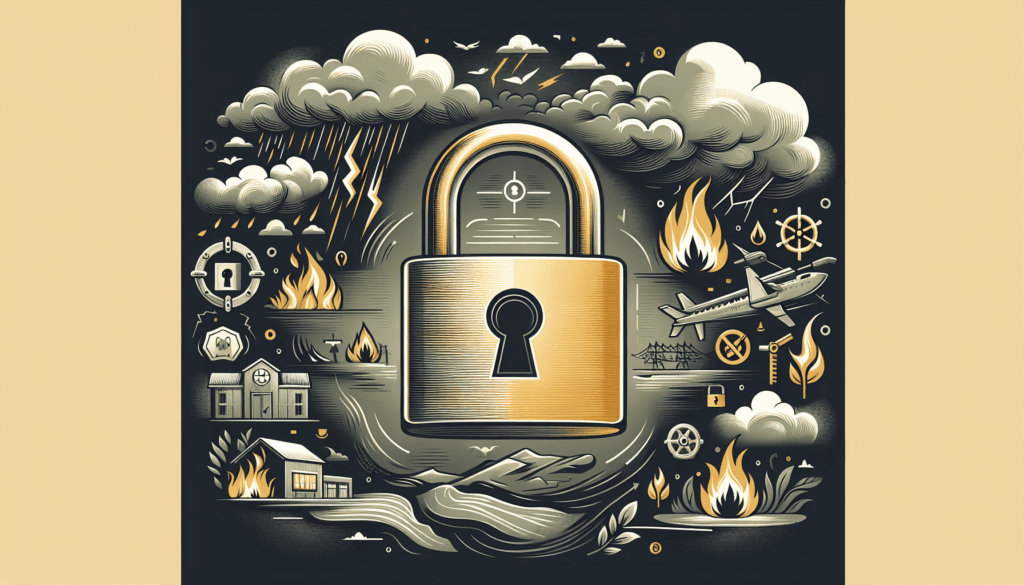Protecting Your Home: Essential Tools for Natural Disaster Preparedness is an informative article that equips you with the necessary knowledge to safeguard your home in the face of natural disasters. From hurricanes to earthquakes, this article provides essential tips and strategies to keep your home and loved ones safe. Envision a scenario where you find yourself in the path of a raging storm or shaking ground — wouldn’t you want to be prepared? By understanding the importance of having the right tools at your disposal, you can navigate through these challenging times with confidence and peace of mind. Discover the practical steps you can take to fortify your home against the unexpected.
Table of Contents
The importance of disaster preparedness
Natural disasters can strike at any moment, and being prepared can make all the difference in ensuring your safety and the safety of your loved ones. Understanding what types of natural disasters could potentially affect your area is the first step in being well-prepared. Whether it’s hurricanes, earthquakes, wildfires, or other calamities, knowing the risks specific to your region allows you to take appropriate measures to mitigate them.
One of the key aspects of disaster preparedness is ensuring that your home is well-prepared to reduce the risk of damage. A well-prepared home can make a significant difference in protecting your property and minimizing the potential for harm to you and your family. By taking proactive steps to reinforce your house with disaster-resistant materials and identifying and securing potential hazards, you can ensure the structural integrity of your home and safeguard against potential dangers.
Beyond physical safety, being prepared for disasters can also have emotional and financial benefits. When you have a well-thought-out plan, you can minimize the stress and anxiety that often accompany emergencies. Additionally, the financial impact of a disaster can be significant, but by being prepared, you can reduce the potential financial burden and ensure a smoother recovery process.
Creating a family emergency plan
When disaster strikes, chaos can ensue. Having a family emergency plan in place can provide much-needed order and clarity during these challenging times. Establishing a meeting spot and a communications plan is essential. Determine a safe location where your family can gather in the event of an emergency, ensuring it is easily accessible to all members. Additionally, establishing a reliable means of communication, such as a designated family member or a messaging app, is crucial for everyone to stay connected and informed.
Assigning roles and responsibilities to each family member is another vital aspect of the emergency plan. Designate specific tasks and responsibilities to ensure a coordinated response. This could include tasks such as gathering emergency supplies, securing the house, or contacting emergency services. By clearly defining each person’s role, you can streamline the response effort and work together more efficiently.
It is important to regularly test and update your family emergency plan to ensure its effectiveness. Conduct drills or practice scenarios to simulate emergency situations and evaluate the plan’s effectiveness. Update the plan as necessary, considering any changes in family dynamics, contact information, or potential risks in your area. Regular testing and updating will help keep everyone familiar with the plan and ensure its optimal functionality.

Essential tools for a home emergency kit
In the event of a disaster, having a well-stocked emergency kit is crucial. It’s essential to include the following items in your home emergency kit:
Food and water for survival: Pack non-perishable food items, such as canned goods, granola bars, and dried fruits, that can sustain you and your family for at least three days. Additionally, ensure an ample supply of clean drinking water, calculating a minimum of one gallon per person per day.
Medical supplies and medications: Include a comprehensive first aid kit with bandages, antiseptic solution, pain relievers, and any necessary prescription medications. Don’t forget to regularly check and replace expired items to ensure they remain effective when needed.
Personal documents and cash: Keep copies of important documents like identification papers, insurance policies, and medical records in a waterproof container. It’s also wise to have some cash on hand, as electronic payment systems may be unavailable during disasters.
Tools for Home Safety During Natural Disasters
When it comes to protecting your home during a natural disaster, certain tools can be invaluable. Consider acquiring the following tools to enhance home safety:
Reinforcing your house with disaster-resistant materials: Invest in materials designed to strengthen your home’s resistance to disasters. This may include hurricane shutters, impact-resistant windows, or earthquake-resistant building materials. These enhancements can significantly reduce damage and increase the safety of your home.
Identifying and securing potential hazards in your home: Conduct a thorough inspection of your property to identify any potential hazards. Secure heavy furniture, water heaters, and other items that could topple during an earthquake. Additionally, make sure to secure flammable materials and install smoke detectors to reduce the risk of fire.
Investing in tools like sandbags or flood barriers: If your area is prone to flooding, having tools like sandbags or flood barriers can help divert water away from your property. These simple yet effective measures can minimize water damage and protect your home and belongings.

Building your emergency tech kit
In today’s technology-driven world, having an emergency tech kit is becoming increasingly important. The following items should be included in your kit to ensure you stay connected and informed during a disaster:
The importance of having a battery or solar-powered radio: In the event of power outages, a battery or solar-powered radio can be a lifeline for receiving news updates and important emergency information. Stay tuned in to the latest developments and directives from local authorities to ensure your safety.
Keeping a charged power bank or generator for your devices: A power bank or generator can be invaluable for charging your essential devices, such as cell phones, during extended power outages. This ensures that you can stay connected with family, friends, and emergency services even if the electricity is down.
Including a high-quality flashlight and spare batteries: A reliable flashlight and spare batteries are necessities during emergencies. Opt for durable, long-lasting flashlights that provide ample illumination. Keep several sets of spare batteries readily available to ensure your light source remains functional.
Preparing your home for a hurricane
If you reside in a hurricane-prone area, it’s crucial to take specific measures to protect your home. Consider the following tips for hurricane readiness:
Essential tools for hurricane readiness: Stock up on hurricane essentials such as plywood, tarps, and sandbags. These materials can help reinforce windows, doors, and vulnerable areas to minimize damage caused by high winds and flying debris.
How to protect your property from high winds and flooding: Trim back trees and shrubs to prevent branches from falling on your home during high winds. Additionally, consider installing storm shutters or impact-resistant windows to protect against wind-driven objects. Clear your gutters and ensure proper drainage to minimize the risk of flooding.
Understanding evacuation orders and safe locations: Familiarize yourself with your community’s evacuation orders and evacuation routes. Have a plan in place for where you and your family will go if you need to evacuate. Research safe locations like shelters or the homes of friends or family members who are outside the hurricane risk zone.

Getting ready for earthquake scenarios
Earthquakes can strike suddenly and violently, causing widespread damage. To protect your home and loved ones, take the following steps:
Necessary tools for earthquake safety: Consider installing earthquake safety devices, such as automatic gas shut-off valves and seismic straps for securing large appliances. These tools can prevent gas leaks, fires, and toppled appliances during an earthquake.
Securing your home’s structure and contents: Bolting heavy furniture, securing water heaters, and reinforcing chimneys are essential steps in earthquake-proofing your home. Additionally, store heavy or breakable items on lower shelves to prevent them from falling and causing injury.
Creating safe spaces within your home: Identify safe spaces in your home where you can take cover during an earthquake. These areas should be away from windows, heavy furniture, and other potential hazards. Consider retrofitting these areas with additional supports, such as steel beams, for added safety.
Addressing the threat of wildfires
For those living in wildfire-prone areas, taking proactive measures to protect your home can be life-saving. Consider the following tools and strategies:
Tools to Protect Your Home from Wildfires: Clear brush and debris at least 30 feet from your home to create a defensible space. This helps prevent flames from reaching your property. Additionally, install fire-resistant roofing materials and ember-resistant vents to safeguard your home against flying embers.
Creating a defensible space around your property: Maintain a clear and well-maintained space around your home by regularly removing dead vegetation and dry debris. Create a buffer zone by utilizing non-flammable materials, such as gravel or concrete, near your property to deter the spread of wildfires.
Understanding and preparing for evacuation: Stay informed about wildfire conditions in your area and pay attention to evacuation orders. Have your emergency kit ready to go and ensure all family members know the evacuation plan. It’s essential to evacuate early if instructed to do so, as wildfires can spread quickly and pose a significant threat.

Technologies for early disaster warnings
Advancements in technology have enabled the development of tools and systems that provide early warnings for natural disasters. Consider the following technologies for enhanced preparedness:
Benefiting from mobile alert systems: Take advantage of mobile alert systems that send emergency alerts directly to your phone. These alerts can provide critical information about approaching disasters, giving you valuable time to take necessary precautions.
Home weather stations and their advantages: Install a home weather station to monitor local weather conditions. These stations provide real-time weather updates, allowing you to stay informed and make informed decisions regarding your safety and the safety of your property.
Smart home technologies for disaster detection and alerts: Embrace smart home technologies that integrate with disaster detection and alert systems. These technologies can monitor environmental conditions, such as smoke or carbon monoxide levels, and provide instant notifications to your smartphone, ensuring swift action can be taken.
Local community resources and support
During times of disaster, your local community plays a crucial role in supporting and assisting you. Consider the following resources and connections within your community:
Leveraging community disaster plans: Familiarize yourself with your community’s disaster plans and protocols. Understand what resources and support are available during emergencies and how you can access them. Participate in community meetings and events to stay up to date and connect with fellow residents.
Connecting with local emergency services: Establish connections with local emergency services, such as fire and police departments. Reach out to understand how they can assist you during a disaster. Building relationships with these organizations can provide crucial support and information in times of need.
Participating in local emergency drills: Take part in local emergency drills and exercises. These drills simulate disaster situations and allow you to practice your emergency plan while connecting with other members of your community. By participating, you contribute to the overall preparedness and resilience of your community.
In conclusion, protecting your home from natural disasters requires careful planning, preparation, and the use of essential tools. By understanding the potential risks in your area, creating a well-thought-out emergency plan, and utilizing technologies and community resources, you can significantly enhance the safety of your home and the well-being of your family. Take action today to ensure you are ready to face any natural disaster that may come your way.

Related site – 14 Must-Have Items for Your Home Emergency Kit

